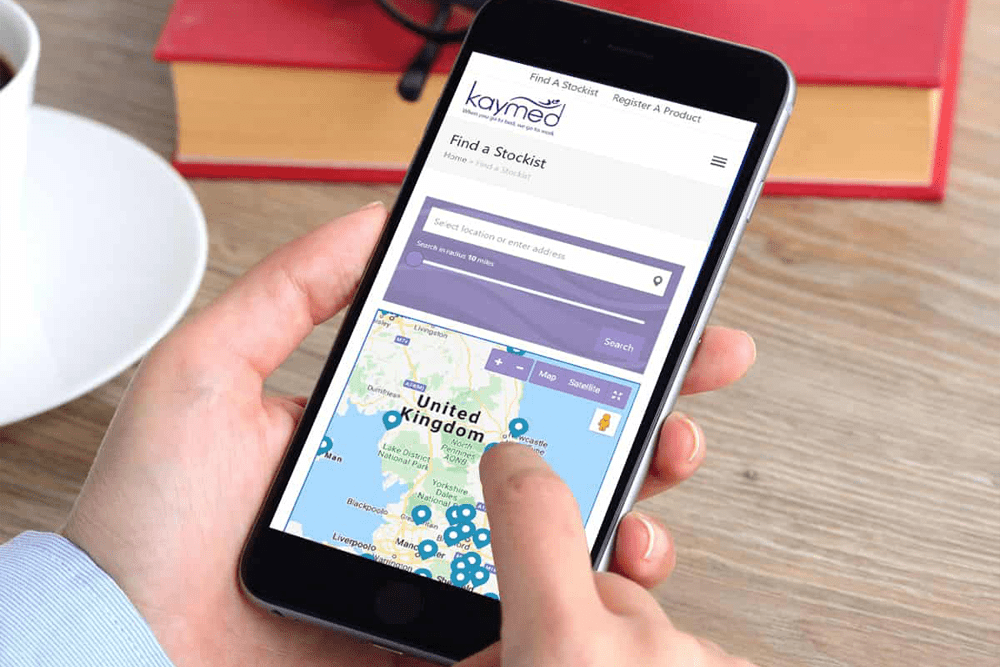Benefit From Using Data In Your Marketing
Using Data in Your Marketing
If you want to increase conversion and reduce marketing costs then you should be using data in your marketing.
- Get close to your customer ( and gather data)
- Use data to inform your decisions ( data based decision making)
- Use data for product / service development
- Technology for your data is only worth buying if it makes things better. Otherwise its just a shiny new toy
- The essence of strategy is choosing what not do – does your data help you in your decision making
- Remember data doesn’t make decisions You do
- Crucial to identify what is the right data for you to gather
- Important – Doing is Easy, Thinking is Hard ( Good Data can make thinking easier)

Looking For Growth – Pareto Your Customers
The Pareto Principle
The Pareto Principle is the theory that 80% of effects come from 20% of causes. When it is applied to business theory, people say that 80% of your profit will come from 20% of your customers.
Consider The Customer Scenario of them being Profitable but a Pain
So if you are looking at how to grow your business profitably, conducting research on the customers who make you the most profit seems like a sensible starting point.
Now there are some important caveats to throw in here for example are client might be highly profitable but be a complete pain in the butt to deal with ( paying late, asking for lots of changes / modifications, leaving orders late and expecting immediate delivery).
Therefore these elements need to be taken into consideration.
Action to Complete the Pareto Analysis
- Write down a list of your “Top Ten” clients by profitability
- Now for some this will be easy, they will have the accountancy systems in place to run a report and get this list in seconds
- For others identifying the top 10 by profitability will be a more onerous task involving discussions with your accountant
- For many “true profitability” will be incredibly difficult to identify
- Many of the manufacturing companies I work with initially have no idea about the “real” profit they make when designing / manufacturing a new product. With design costs, research, additional production time just being lost within the system. This often means that a project that you thought would be highly profitable, simply ends up covering costs or losing money
- Top Tip: Make sure you have accurate information available – its pointless working to get more customers who have the profile of a loss making customer
- What characteristics do these Top 10 customers have in common
- The amount they spend
- Number of orders placed
- Type of person you deal with
- Type of products / services they are buying
- etc
- Talk to them
- Don’t Email them
- Don’t send them a survey (printed or online)
- Talk to them, ideally face to face, with specific time allocated to an open and frank discussion
- Find out about how they heard about your business / product / service
- Now I know sometimes this can be difficult (especially) when they have been a customer for a long time, but its useful information to gain
- For more recent customers, did they find you on the web, was it via a referral etc.
- Identify how they use your product or service ( especially important if your product is sold through central procurement, so you sell the product but have no idea about the end application)
- Ultimately we want to be able to be able to develop a profile for these customers

Want to pick up the phone and speak to us about your Website project?
Call us on: 01733 361729 mail: solutions@bdolphin.co.uk

Now answer these questions:
- What do they have in common?
- Where did you meet them?
- How did they find you?
- Where can you find more customers like them?
- Do you put in significant effort to acquire more customers like them?
- Do you have similar clients in the pipeline
- In fact do you have a sales pipeline
- If you do have a pipeline, how do you manage it, do you have the CRM systems and processes in place
- What actions can you take over the next 30 days to acquire a new customer like them
- Note: recognising that some prospects can take months / years to nurture and develop before they can purchase, unless you start the process you will never complete the sale
In Summary : Looking For Growth – Pareto Your Customers
- Identify your top 10 most profitable customers
- Analyse them
- Talk to them to accurately understand why they choose you
- Research how to find more customers that fit this profile
- Take Action – to start finding the “right” kind of customers
- Don’t get distracted – other orders may be eating into your time and losing you money
Lets consider how to practically do this research / analysis
More Information Changes Perception
The need to “think outside of the box” is obvious. In today’s rapidly changing business world this has never been more true. Over the Covid period there have been some interesting examples where businesses have had to reinvent themselves in order to continue trading.
The journey to innovation has been speeded up significantly for those businesses who suddenly found themselves with time to think and no distractions.
Innovation is difficult ( when you have your normal day job to complete) and complex decisions need thinking through, so therefore often get left and avoided.
Gut feel and Gut feeling are just the starting point and what we need to do is train the brain and start the quest for data
Unlocking Options and the issue of data
- If we collected all the data from the beginning of time to the year 2000
- It would be less than we now create in one minute
- With data we can make better decisions
- We need to bring data into decision making


The Quest Approach
- Question – get the data / information that is preventing decisions
- Understanding – do we now fully understand all the issues
- Everything else – what else do we need to consider, lets look at the wider picture
- Success – what will success look like,
- what’s the best that could happen
- what’s the worst that could happen
- Try – what are you going to try. As a leading sports brand states “Just do it”
More Information Changes Perception – Testing your idea
- What is your minimum viable product / activity to adequately test the idea
- an air bed on a lounge floor was the starting point for AirBnB
- Explore the potential for Win / Win partnerships
- Learn from other mistakes
- Even if things are going well innovate ( no need to wait for a global pandemic )
- If things going well – innovate
- Using data in your marketing will help you challenge assumptions
We need to understand that as individuals we have a bias but with stimulus ( and necessity) we can think differently

FREE Website Performance Check
- Speed plays an important part in website performance how well does yours perform on desktop and mobile?
- Is your site mobile responsive if not how many customers are you losing?
- Is your site HTTPS?
- With GDPR in place is your site legally compliant?
- Find out about loads more website performance issues

Marketing Example – Using Data Analysis to measure performance – An SME Perspective
For small and medium-sized manufacturing enterprises, data analysis is a powerful tool to measure the performance of marketing efforts and make informed decisions. In an industry where competition can be fierce, and resources limited, leveraging data can help manufacturers maximise their marketing return on investment and better understand their customers. Here’s an example to illustrate how data analysis can be applied.
Consider a family-run furniture manufacturer, “Ultralight Walking,” that produces high-quality walking poles and walking pole spares. To expand their reach, they launch a digital marketing campaign aimed at attracting more customers to their website and converting them into buyers. By implementing data analysis tools such as Google Analytics, CRM software, and email marketing platforms, Ultralight Walking begins tracking the performance of their campaign across different channels.
The first step involves identifying key performance indicators (KPIs) such as website traffic, bounce rates, time spent on product pages, and conversions (e.g., brochure downloads or direct purchases). Analysing this data, they discover that while the campaign is generating significant traffic from paid social media ads, the bounce rate on the landing page is high. This suggests that the page isn’t meeting visitor expectations. By studying heatmaps and user behaviour, they learn that visitors are abandoning the page due to slow load times and a lack of clear product information. Armed with this insight, they optimise the landing page, improving load speed and adding customer testimonials and detailed product descriptions.
Furthermore, Ultralight Walking integrates their CRM data with their marketing analytics to track the source of new leads. They notice that email campaigns targeting trade professionals, such as leaders of ramblers or walking groups, yield a higher conversion rate compared to their general consumer campaigns. This insight prompts them to double down on their B2B marketing efforts, refining their messaging and offering tailored incentives like discounts for bulk orders or free consultations.
Data in your marketing
In addition to monitoring marketing channels, the company analyses sales data to assess the impact of their campaigns. They observe that customers acquired through specific online channels have a higher average order value than those coming from traditional trade shows. This drives their decision to reallocate part of their marketing budget from physical events to digital advertising.
Over time, by consistently measuring and refining their strategies based on data, Ultralight Walking is able to boost their return on marketing investment, reach a more targeted audience, and increase sales. For SMEs in manufacturing, the ability to gather and analyse data is essential not only for measuring success but also for gaining a competitive edge in a crowded marketplace.
By adopting a data-driven approach, SMEs can ensure their marketing strategies are not only effective but also aligned with the needs of their target audience, paving the way for sustainable growth.
The Benefit of Using Data in Your Marketing
Using data in your marketing efforts can provide numerous benefits and help you make more informed decisions. Here are some key advantages of leveraging data:
- Improved targeting and personalisation: Data allows you to gain insights into your target audience’s demographics, preferences, behavior, and purchase history. With this information, you can create highly targeted marketing campaigns and personalise your messaging to resonate better with individual customers or segments.
- Enhanced customer understanding: Data-driven marketing helps you understand your customers better. By analysing data, you can identify patterns, trends, and customer pain points, allowing you to create strategies that address their needs more effectively.
- Optimal resource allocation: Data can guide your marketing budget allocation by identifying the most effective channels, campaigns, and initiatives. By analysing performance metrics, such as return on investment (ROI) and customer acquisition cost (CAC), you can optimise your spending to maximize results.
- Improved decision-making: Data provides valuable insights that support strategic decision-making. It enables you to measure the success of marketing campaigns, identify areas for improvement, and make data-driven adjustments to your strategies. This helps minimize guesswork and increases the likelihood of achieving desired outcomes.
- Better customer experience: By leveraging data, you can tailor the customer experience to meet individual needs and preferences. Personalised recommendations, targeted offers, and relevant content based on customer data can enhance customer satisfaction, engagement, and loyalty.
- A/B testing and optimisation: Data allows you to conduct A/B testing to compare different marketing approaches and determine which ones yield the best results. By analysing the data collected from these tests, you can optimise your campaigns, website design, landing pages, and other marketing elements to improve performance.
- Real-time monitoring and agility: With access to real-time data, you can monitor the performance of your marketing initiatives and make adjustments on the fly. This agility helps you respond quickly to changing market conditions, customer behavior, and emerging trends, enabling you to stay competitive and relevant.
- Measurable results: Data-driven marketing allows you to track and measure the impact of your efforts accurately. By setting up key performance indicators (KPIs) and monitoring metrics, you can evaluate the success of your campaigns, determine ROI, and make data-backed decisions to optimize your marketing strategies.
- Competitive advantage: Leveraging data effectively can give you a competitive edge. By utilizing data-driven insights, you can identify market opportunities, uncover untapped customer segments, and stay ahead of your competitors.
Data-driven marketing empowers you to understand your audience, make informed decisions, optimise campaigns, and provide personalised experiences. It enables you to allocate resources effectively, improve results, and achieve a competitive advantage in today’s data-driven business landscape.
If you would like to know more about using data in your marketing contact Andrew Goode MBA, MSc, FCIM Click here to arrange a call
Other articles linked with marketing metrics that may provide additional insight. Marketing metrics and analytics, marketing ROI Planning , marketing revenue analytics and Marketing Measurement Metrics and Website Design




